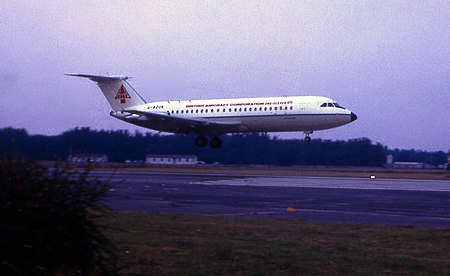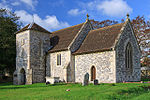1963 BAC One-Eleven test crash
1963 disasters in the United Kingdom1963 in EnglandAccidents and incidents involving the BAC One-ElevenAirliner accidents and incidents caused by stallsAviation accidents and incidents in 1963 ... and 3 more
Aviation accidents and incidents in EnglandOctober 1963 events in the United KingdomUse British English from June 2014

The 1963 BAC One-Eleven test crash was a fatal accident of a British Aircraft Corporation prototype aircraft on 22 October 1963, near Chicklade in Wiltshire, England while it was undertaking a test flight. All seven crew members on board the BAC One-Eleven were killed.
Excerpt from the Wikipedia article 1963 BAC One-Eleven test crash (License: CC BY-SA 3.0, Authors, Images).1963 BAC One-Eleven test crash
Geographical coordinates (GPS) Address Nearby Places Show on map
Geographical coordinates (GPS)
| Latitude | Longitude |
|---|---|
| N 51.1252672 ° | E -2.135836 ° |
Address
Boyton
, Boyton
England, United Kingdom
Open on Google Maps











